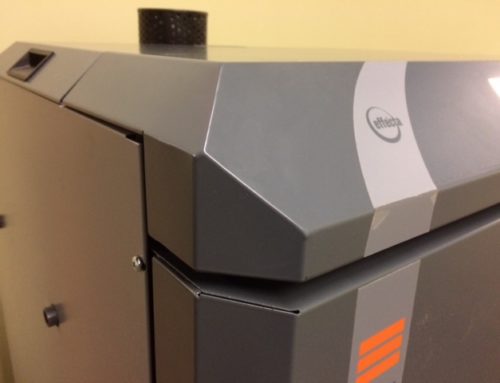Important considerations for a greenhouse heating system are heating requirement (e.g. 50,000 Btu/hour), type of fuel and type of system. Let’s look at these three areas separately.
1.) The optimal heating requirement of the greenhouse heating system is dependent on several variables. You’ll want to consider the area of the greenhouse, the materials it’s made of, the location, the outdoor temperatures, and the target temperatures for inside. If you’re not planning to heat the greenhouse year-round, you may not need to determine the heat load too carefully. You may be happy to get just a head start on the growing season. On the other hand, if you plan to heat the greenhouse year-round, you should hire a professional to help determine what your heat requirement will be, so that the heat needed by the plants on the coldest day of the year is met by the heat supplied by the system. Keep in mind that most plants to not have to be kept as warm as our living spaces. The more heat put in the greenhouse, the more heat will be lost, so it’s important not to overheat the greenhouse. Just heat it to what the plants need.
2.) The typical fuels you can consider are oil, propane, wood, wood pellets, and electricity. Electric heating systems are the least economic choice and should be avoided if you don’t have access to cheap hydropower. When factoring in the lower energy content of propane, oil and propane are usually similar in price to each other. Wood is usually the least expensive fuel, but also the least convenient. Wood pellets offer an excellent value in being a low cost fuel that’s also convenient. Wood and wood pellets are also better from an environmentally sustainable perspective. Over the lifetime of the heating system you will probably spend much more on fuel than the equipment itself, so fuel type should be overweighted in your analysis.
3.) Typical systems are either radiant electric, forced air or hydronic. Radiant electric is the most expensive, but may be appropriate if just a few plants in a large greenhouse need heat. Forced air systems are less efficient to operate but are often simplest to install if running on electricity and if sufficient power is available at the greenhouse. Furnace-powered hot air systems may age prematurely due to humidity, and the energy consumption of operating fans to blow the air really adds up over time. Hydronic systems are systems that circulate hot water from a boiler through tubes to a heat emitter such as a fan coil, radiators, or in many cases just the tubes themselves embedded in soil or immersed in hydroponic tanks. Hydronic distribution systems are the most efficient and quiet. If using a hydronic system, be sure to use tubing that has a built-in oxygen barrier to prevent corrosion. Oxygen-barrier PEX is a commonly used product for this purpose.
Please call or email us or comment below if you have questions or comments, or look at our products pages to see products suitable for heating greenhouses.






Leave A Comment